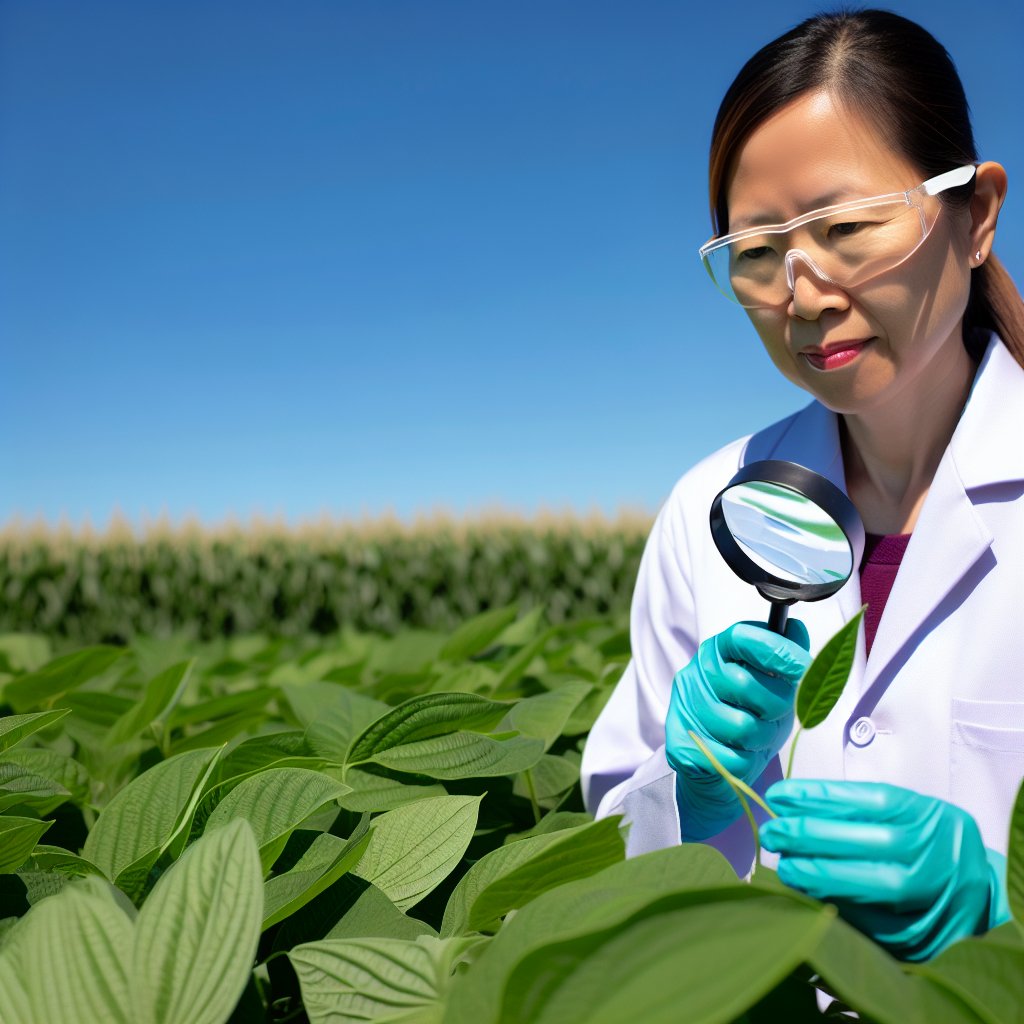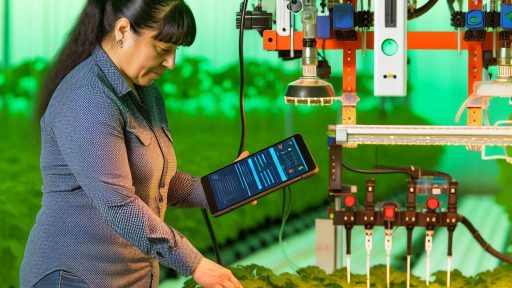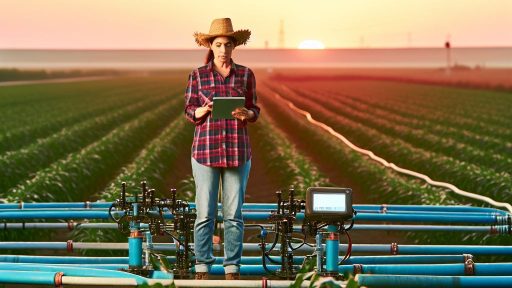Introduction to Genetically Modified Technology in Agriculture
Genetically modified technology revolutionizes agriculture today.
This innovative approach enhances crop yields significantly.
Farmers increasingly adopt GM crops to address food security.
Moreover, this technology allows for sustainable farming practices.
For instance, pest-resistant crops reduce the need for pesticides.
Additionally, drought-tolerant varieties help in water conservation.
Transitioning to GM technology requires rigorous safety assessments.
Regulatory agencies evaluate the safety for human consumption and the environment.
Furthermore, public perception plays a crucial role in adoption.
Many consumers express concerns about GM foods and their impacts.
However, educational initiatives can raise awareness and acceptance.
Research continues to focus on improving genetic modification techniques.
Future trends include editing genes using CRISPR technology.
This method promises targeted modifications with greater precision.
As techniques advance, they may lead to more resilient crops.
Transform Your Agribusiness
Unlock your farm's potential with expert advice tailored to your needs. Get actionable steps that drive real results.
Get StartedInnovations will likely focus on nutritional enhancements as well.
For example, biofortification aims to increase essential nutrients in crops.
In addition, integrated pest management systems will evolve through GM technology.
These systems aim to lower chemical usage while maintaining productivity.
Genetically modified technology shapes the future of agriculture.
Its potential benefits warrant continued research and responsible application.
Current State of Genetically Modified Crops: Successes and Challenges
Successes in Genetically Modified Crops
Genetically modified (GM) crops have revolutionized agriculture.
They increase crop yields significantly.
Farmers benefit from reduced losses due to pests and diseases.
For instance, Bt corn and cotton resist insect infestations effectively.
GM crops also require fewer chemical pesticides.
This leads to a reduction in environmental contaminants.
Moreover, GM soybeans resist herbicides, simplifying weed management.
Farmers report higher profits thanks to increased efficiency.
Additionally, improved drought resistance supports farming in arid regions.
Challenges Facing Genetically Modified Crops
Despite their successes, GM crops face several challenges.
Public skepticism remains a significant barrier.
Concerns about health and environmental impacts persist.
Many consumers prefer organic and non-GM products.
This trend can affect market demand for GM crops.
Also, issues related to genetic diversity arise.
Overreliance on a few GM varieties reduces genetic diversity.
This makes crops more vulnerable to diseases.
Moreover, regulatory hurdles complicate the approval process.
Showcase Your Farming Business
Publish your professional farming services profile on our blog for a one-time fee of $200 and reach a dedicated audience of farmers and agribusiness owners.
Publish Your ProfileFarmers may face restrictions on the use of GM crops.
Innovation and Research Developments
Innovation continues to drive the field of GM technology.
Recent advancements in CRISPR technology enable precise modifications.
This technique allows scientists to edit genes accurately.
As a result, researchers can develop crops with specific traits.
Furthermore, the integration of biotechnology and data analytics enhances crop performance.
Researchers at AgriTech Solutions are pioneering these efforts.
They focus on developing stress-resilient crops to adapt to climate change.
This could provide farmers with more stable yields in uncertain conditions.
Global Acceptance and Regulatory Landscape
The acceptance of GM crops varies globally.
Countries like the United States embrace GM technology widely.
Conversely, Europe maintains strict regulations limiting GM crop usage.
Such differences create challenges for international trade.
Companies must navigate various regulatory landscapes to enter new markets.
Collaboration among scientists, governments, and stakeholders is crucial.
This approach promotes shared understanding and informed decisions.
Emerging GMO Trends: CRISPR and Precision Breeding
Introduction to CRISPR Technology
CRISPR technology revolutionizes genetic engineering in agriculture.
This approach allows precise modifications to DNA sequences.
It enhances crop traits rapidly and efficiently.
Researchers now easily target specific genes to improve yields.
Advantages of Precision Breeding
Precision breeding offers numerous benefits for crop development.
It reduces the time needed for traditional breeding methods.
Additionally, it lowers the risk of unintended genetic changes.
This method promotes the development of resilient crop varieties.
Applications in Agriculture
Farmers use CRISPR to combat agricultural challenges.
It helps in creating drought-resistant crops.
Moreover, it enhances pest resistance without harmful chemicals.
These innovations lead to more sustainable farming practices.
Real-World Examples
Several companies lead advancements in CRISPR technology.
For instance, BioCrop Innovations develops stress-resistant maize.
Similarly, GreenGenetics utilizes precision breeding for disease-resistant tomatoes.
These examples showcase the potential of emerging GMO technologies.
Uncover the Details: Exploring Biotech-Based Fertilizers And Their Benefits
Impact of Climate Change on GMO Development and Adoption
Shifting Agricultural Landscapes
Climate change alters growing seasons and agricultural zones.
Agricultural stakeholders must adapt to these shifts.
Farmers experience changes in pest populations and crop diseases.
Consequently, crop resilience becomes essential.
Innovations in Genetic Modification
Scientists pursue advanced genetic modification techniques.
These innovations include CRISPR and gene editing technologies.
They enhance crops’ resistance to extreme weather events.
Showcase Your Farming Business
Publish your professional farming services profile on our blog for a one-time fee of $200 and reach a dedicated audience of farmers and agribusiness owners.
Publish Your ProfileAdditionally, they improve nutritional content and yield potential.
Public Perception and Policy Changes
As climate impacts worsen, public attitudes toward GMOs may shift.
People increasingly recognize the need for sustainable food sources.
This shift can lead to more supportive policies for GMO research.
Government regulations may evolve to facilitate innovation.
Economic Considerations in GMO Adoption
Farmers face rising production costs due to climate change.
Investment in GMOs may provide long-term economic benefits.
Higher yields and reduced losses can improve profitability.
Moreover, GMO crops may decrease dependence on chemical inputs.
Future Outlook for GMO Technology
Research into climate-resilient crops will accelerate.
Innovations will focus on drought resistance and flood tolerance.
Future GMOs could address specific regional climate challenges.
As a result, they will play a crucial role in global food security.
Explore Further: Integrating Blockchain To Boost Farm-to-Fork Supply Chain Transparency
Consumer Perception and Regulatory Landscape Surrounding GMOs
Understanding Consumer Attitudes
Consumer perception of genetically modified organisms (GMOs) varies globally.
Many consumers remain skeptical about GMO safety and benefits.
Surveys show that approximately 50% of Americans do not favor GMOs in their food.
On the other hand, some consumers appreciate the advantages of GMOs.
These include improved crop yields and disease resistance.
Education plays a crucial role in shaping consumer attitudes.
Organizations like the Non-GMO Project work to inform consumers.
Consumers often seek transparency in labeling practices.
Influence of Social Media
Social media significantly impacts consumer opinions on GMOs.
Platforms facilitate the spread of both positive and negative information.
Engagement with influencers can amplify differing viewpoints.
As a result, brands must be proactive in their communication strategies.
They should address concerns and misconceptions directly.
Global Regulatory Approaches
The regulatory landscape for GMOs differs widely by region.
In the European Union, strict regulations govern GMO use.
Conversely, countries like the United States take a more lenient approach.
Here, regulation focuses on safety assessments rather than labeling requirements.
Each regulatory framework influences consumer trust in GMOs.
Future Regulation Trends
Future trends may lead to more harmonized regulations globally.
Increased research efforts will aim to improve safety protocols.
Additionally, governments may consider public input in regulatory processes.
Such changes could build greater consumer confidence in GMOs.
Industry Actions
Food and agricultural companies are taking initiative to improve public perception.
Many invest in research to showcase the benefits of GMOs.
Transparency initiatives also help educate consumers about GMO safety.
As a result, these companies aim to foster trust among consumers.
Showcase Your Farming Business
Publish your professional farming services profile on our blog for a one-time fee of $200 and reach a dedicated audience of farmers and agribusiness owners.
Publish Your ProfileUnderstanding Consumer Perceptions
Understanding consumer perceptions is crucial for the future of GMOs.
As education and engagement improve, perceptions may gradually shift.
This shift could lead to greater acceptance of GMOs in the market.
Learn More: Sustainable Farming Practices Using Controlled Environment Systems

Integration of AI and Data Analytics in GMO Research and Development
Enhancing Research Capabilities
AI technology revolutionizes the research landscape in agriculture.
It accelerates the analysis of genetic data, enabling breakthroughs.
Moreover, AI algorithms can identify patterns in crop yields.
This insight allows researchers to make informed decisions quickly.
Precision Breeding Techniques
Data analytics improves precision in breeding techniques.
By analyzing genetic markers, scientists can target desirable traits.
This method minimizes the time needed to develop new varieties.
Ultimately, it leads to improved crop resilience and yield.
Real-Time Decision Making
Integrating AI provides real-time data for farmers and researchers.
This capability allows for immediate adjustments in cultivation practices.
Farmers can optimize resource allocation based on current conditions.
Consequently, they improve efficiency and productivity in their fields.
Collaboration and Knowledge Sharing
AI fosters collaboration between research institutions and companies.
Data sharing through online platforms accelerates innovation.
As a result, diverse knowledge contributes to advanced agricultural practices.
This collaboration strengthens the overall GMO research framework.
Addressing Global Food Security
The application of AI in GMO research directly impacts food security.
By enhancing crop production, it helps meet increasing global demands.
Furthermore, it contributes to sustainable farming practices.
Integrating AI technologies is vital for future agricultural success.
Uncover the Details: Solar Irrigation Solutions for Efficient Water Use
Future of Sustainable Agriculture
GMOs in Feeding a Growing Population
Genetically modified organisms (GMOs) play a crucial role in sustainable agriculture.
As the global population grows, food demand will increase significantly.
GMOs can enhance crop yields and resilience to environmental challenges.
These technologies allow farmers to produce more with fewer resources.
For instance, drought-resistant crops can thrive in arid conditions.
This adaptability helps farmers maintain productivity during climate fluctuations.
The Role of Biotechnology
Biotechnology offers innovative solutions for food production challenges.
It allows for precise genetic modifications in plants and animals.
These advancements can lead to crops with improved nutritional profiles.
For example, scientists are developing rice enriched with vitamins.
Such crops can combat nutritional deficiencies in vulnerable populations.
Environmental Impact
GMOs also contribute to environmental sustainability.
By increasing crop efficiency, they reduce the need for chemical inputs.
This reduction leads to less pesticide runoff and soil degradation.
Moreover, genetically engineered crops can be designed to require less water.
Showcase Your Farming Business
Publish your professional farming services profile on our blog for a one-time fee of $200 and reach a dedicated audience of farmers and agribusiness owners.
Publish Your ProfileThis feature is particularly vital in regions facing water scarcity.
Public Perception and Acceptance
Despite the benefits, public perception of GMOs remains mixed.
Many consumers express concerns about safety and transparency.
Education plays a key role in addressing these concerns.
Engaging the public through science-based information can build trust.
Additionally, labeling initiatives can promote informed consumer choices.
Future Innovations
The future of GMOs in agriculture looks promising.
Researchers continue to explore ways to enhance food security globally.
Innovations like CRISPR gene editing offer precision in crop development.
Such technologies can speed up the breeding of climate-adaptive crops.
As we innovate, the focus will remain on sustainability and safety.
Ethical Considerations and Future Discussions in GMO Technology
The Moral Implications of GMOs
Genetically modified organisms raise critical ethical questions.
These questions revolve around the safety of GMOs for human consumption.
Moreover, they address concerns about potential environmental impacts.
Farmers face ethical dilemmas regarding the use of GMOs in their practices.
Consumers often grapple with the transparency of GMO labeling.
Socioeconomic Effects of GMO Adoption
The introduction of GMOs can affect farming communities significantly.
It can lead to economic advantages for high-tech farms.
On the flip side, small farmers may struggle to compete.
Furthermore, GMOs can impact local economies and food markets.
Public Perception and Policy Discussion
Public opinion on GMOs varies widely across regions and countries.
Educational campaigns play a crucial role in shaping understandings.
Additionally, policy discussions need to address consumer rights.
Transparent labeling is a vital part of these discussions.
Governments must navigate the balance between innovation and safety.
Future Research Directions
Research in GMO technology continues to evolve rapidly.
Scientists explore novel applications of gene editing techniques.
Potential benefits include increased resilience to climate change.
Moreover, investigations into health enhancements could reshape diets.
Future studies will need to prioritize ethical frameworks in their approaches.
Additional Resources
Public Acceptance of Plant Biotechnology and GM Crops – PMC
Adoption of Genetically Engineered Crops in the United States …




